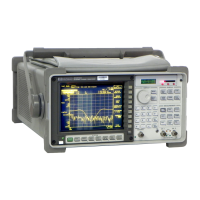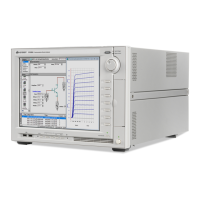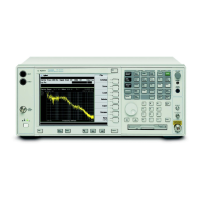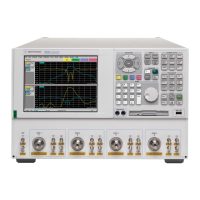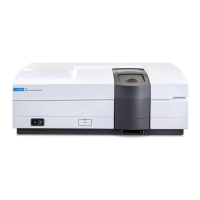14 N9912A FieldFox User’s Guide
Then Internal Temperatures.
The temperature at which the following events occur is the average of the RF1,
RF2, SB1, SB2 temperatures. These temperatures come from internal sensors
embedded within FieldFox.
Temperature Control Mode
At approximately 73 °C, the FieldFox enters Temperature Control mode by
reducing display intensity and measurement speed. This should decrease the
internal temperature which preserves measurement accuracy and maintains the
long-term reliability of the FieldFox.
When entering Temperature Control mode, save your instrument state and data
that you want to keep.
When the temperature drops to approximately 71°C, normal operating settings
are restored.
NOTE Measurement speed specifications do NOT apply in Temperature Control Mode.
High-Temp Shutdown
In extreme situations, Temperature Control mode may not stop an increase in
the FieldFox internal temperature. At approximately 75°C, High-Temperature
Shutdown will engage and turn OFF the FieldFox.
Just prior to shutdown, the FieldFox will display a warning of imminent shut
down.
Avoid Overpowering the FieldFox
The FieldFox can be damaged with too much power or voltage applied.
Exceeding the maximum RF power levels shown below will cause an ADC Over
Range message to appear on the screen.
Maximum Input Voltages and Power:
RF OUT Connector: ±50 VDC, +23 dBm RF
RF IN: ±50 VDC, +27 dBm RF
DC Input: 19 VDC, 4 ADC
Learn more about Maximum power and voltages in the FieldFox Data Sheet on
page 204.
NOTE Very often, coaxial cables and antennas build up a static charge, which, if
allowed to discharge by connecting to the FieldFox, may damage the instrument
input circuitry. To avoid such damage, it is recommended to dissipate any static
charges by temporarily attaching a short to the cable or antenna prior to
attaching to the FieldFox.
